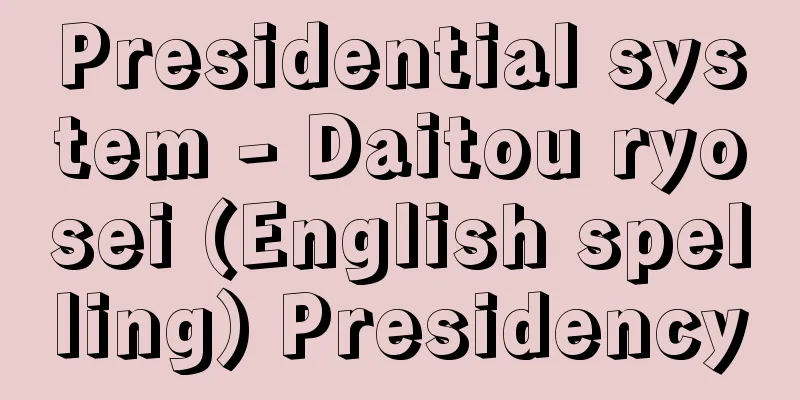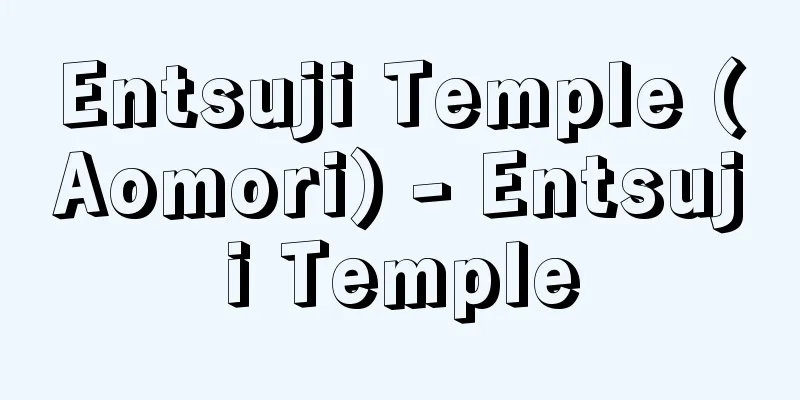Masamune Hakucho

|
Novelist, playwright, and critic. Born on March 3, 1879 in Honami, Iri Village, Wake County, Okayama Prefecture (present-day Honami, Bizen City). His real name was Tadao. His father, Urajiro, was a large landowner who held positions such as village mayor and bank director. He was the eldest son with nine younger siblings. He was sickly from an early age and had a strong desire to seek salvation from the fear of death. In 1892 (Meiji 25), he discovered Christianity through the magazine Kokumin no Tomo. From then on, he studied the Bible diligently at a Christian lecture hall in a neighboring village, at Biyo Gakuin in Okayama City, and from the books of Uchimura Kanzo, until he entered Tokyo Senmon Gakko (the precursor to Waseda University) in 1896. Even after moving to Tokyo, he attended Uchimura's lectures, sometimes despite his illness, and in 1897, at the age of 19, he was baptized at Uemura Masahisa's church, and remained a sincere church member until he "abandoned" his faith in 1901 (Meiji 34, graduating from the Department of Literature). On the other hand, while still a student, he participated in joint critiques for the Yomiuri Shimbun literature column, and frequently attended Kabuki performances by Ichikawa Danjuro and Onoe Kikugoro. In 1903, he joined the Yomiuri Shimbun, and until he left the company in 1910, he was a prolific writer of theater critiques, art critiques, literary critiques, religion articles, and more. His first work as a writer was "Solitude" (1904), but he is truly considered a representative writer of naturalist literature through his 1907 work "Dust" and other works, including "Balloons," "Where to," and "May Banner." These works are excellent depictions of a twilight life that is fitting for the naturalist watchwords of the time, such as "idealless," "unresolved," and "disillusioned." For over 60 years since then, he has always been at the forefront of the literary world, and his creative life has continued uninterrupted, not only in novels but also in plays and criticism. Even after Japan's defeat in the war, he was so prolific that in 1949 (Showa 24), at the age of 71, he wrote a full-length novel of 750 pages, "Nihon Dasshutsu" (Escape from Japan) (unfinished). By the way, he was called the Nihilist Swan, a writer who continued to sing the song of the falsehood of life from "Where to" until the year of his death. There are two possible reasons for this. One is the fear of death that was rooted in him from childhood, the false view that no matter how arrogant a person may be, they will eventually die, and the other is his view of the reality of human beings, which holds that the hopeless human world, where desires clash endlessly, is ultimately nothing but a hellish scene. These two things interacted with each other, and what constantly bubbled up from the depths of his heart was the feeling that life was false, a dense nihilism. Therefore, most of his works are colored with a sense of emptiness emanating from death and desire, and this was especially evident in the essays he wrote after Japan was defeated at the age of 67. However, the truth about Shiratori goes one step further, which is often overlooked. It is that, even though he was overwhelmed by an inner nihilism, he always strongly concealed a romanticism behind his delusional views, believing that the world to which humans can entrust themselves forever must be something beyond reality. In that sense, his declaration of return to faith at the time of his death, "Amen," was a natural conclusion. It should also be noted that his literary criticism was unique and notable in the history of criticism as a distinctive "personal criticism" from the end of the Taisho era onwards, and that many of his plays, such as "Happiness of Life" (1924), made Kawabata Yasunari exclaim, "Shiranari is a formidable genius." Died October 28, 1962. [Masanosuke Hyodo] "The Complete Works of Masamune Hakucho, 35 volumes (1983-, Fukutake Shoten)" ▽ "Masamune Hakucho, by Oiwa Ko (1964, Kawade Shobo Shinsha)" ▽ "Masamune Hakucho, by Goto Ryo (1966, Shichosha)" ▽ "Masamune Hakucho Theory, by Hyodo Masanosuke (1968, Keiso Shobo)" ▽ "Masamune Hakucho, by Yamamoto Kenkichi (1975, Bungeishunju)" [Reference] |National Diet Library Masamune Shiratori Source: Shogakukan Encyclopedia Nipponica About Encyclopedia Nipponica Information | Legend |
|
小説家、劇作家、批評家。明治12年3月3日岡山県和気(わけ)郡伊里村穂浪(ほなみ)(現備前市穂浪)生まれ。本名忠夫。父浦二は村長、銀行取締役など歴任の大地主。弟妹9人の長男。幼時より病弱で死の恐怖からの救いを求める願望強く、1892年(明治25)『国民之友』でキリスト教を知り、以来1896年東京専門学校(早稲田(わせだ)大学の前身)入学まで隣村のキリスト教講義所や岡山市の薇陽(びよう)学院で、さらには内村鑑三(うちむらかんぞう)の著書などで聖書を熱心に学んだ。上京後も内村の講演にはときに病苦を押しても出席、1897年19歳のとき植村正久(うえむらまさひさ)の教会で受洗、1901年(明治34、この年文学科卒業)「棄教」するまで真摯(しんし)な教会員となった。他方、在学中『読売新聞』文学欄の合評会に出たり、市川団十郎・尾上菊五郎(おのえきくごろう)の歌舞伎(かぶき)に通いつめた。1903年読売新聞社に入社、1910年の退社まで、劇評・美術評・文芸時評・宗教記事等々に縦横にペンを振るった。作家としての処女作は『寂寞(せきばく)』(1904)だが、真に自然主義文学の代表的作家とみなされるのは1907年の『塵埃(じんあい)』をはじめとし、『玉突屋』や『何処(どこ)へ』『五月幟(さつきのぼり)』などによってである。無理想、無解決、幻滅といった当時の自然派の合いことばにふさわしい黄昏(たそがれ)の人生図が優(すぐ)れて描出されたからである。以来60年余、つねに文壇の第一線にたち、小説のみならず戯曲や批評などに彼の創造生活は絶え間なく続けられた。敗戦後も1949年(昭和24)など、71歳にして750枚にも及ぶ長編小説『日本脱出』(未完)を書くほどの旺盛(おうせい)さであった。 ところで、彼は『何処へ』以来死の年に至るまで人生虚妄の歌をうたい続けた作家、ニヒリスト白鳥とよばれた。理由は二つ考えられる。一つは幼時からに根ざす死の恐怖、人間いかに偉そうにしてもしょせんは死ぬということによる虚妄観、他は欲と欲とが無限に波立ち合う救いがたい人間世界は畢竟(ひっきょう)地獄図にほかならずとする人間実相観である。この二つがこもごも作用しあい彼の胸底深いところから絶えず吹き上げていたもの、それが人生虚妄の思い、濃密なニヒリズムだった。それゆえ、作品のほとんどがこうした死と欲より発する虚無感に彩られており、それは67歳で敗戦を迎えてからのエッセイにおいてとくにその冴(さ)えを示していた。 しかし白鳥における真は、さらに一歩踏み込んだところにあったことがとかく看過されている。それはともすると内なるニヒリズムに圧倒されながらも、人間が永遠に身を託す世界は現実を超えたところにあるはずというロマンティシズムといえるものを、彼がその虚妄観の裏側に絶えず強烈に潜ませていたことである。その意味から彼の臨終の際の信仰復帰の表明である「アーメン」は当然の帰結だったといえる。なお彼の文芸評論が大正末年以降独得な「私評論」として評論史に特筆されるユニークなものであったこと、および彼の戯曲にはたとえば『人生の幸福』(1924)のように、川端康成(かわばたやすなり)を「恐るべし天才白鳥」と感嘆させるほどのものが少なくなかったことなども銘記されてよい。昭和37年10月28日没。 [兵藤正之助] 『『正宗白鳥全集』全35巻(1983~ ・福武書店)』▽『大岩鉱著『正宗白鳥』(1964・河出書房新社)』▽『後藤亮著『正宗白鳥』(1966・思潮社)』▽『兵藤正之助著『正宗白鳥論』(1968・勁草書房)』▽『山本健吉著『正宗白鳥』(1975・文芸春秋)』 [参照項目] |国立国会図書館所蔵"> 正宗白鳥 出典 小学館 日本大百科全書(ニッポニカ)日本大百科全書(ニッポニカ)について 情報 | 凡例 |
<<: Masamoto's Travel Companion
Recommend
Olympia (English spelling)
The capital of Washington State in the northwester...
Suetsumuhana
A collection of Senryu poems from the mid-Edo per...
Tokachigawa [Hot Springs] - Tokachigawa
Located in Otofuke Town, Hokkaido, facing the Toka...
Erinyes (English spelling)
Greek goddesses of vengeance. They are said to hav...
Bungeishunju Co., Ltd.
A publishing company founded by Kikuchi Kan. In Ja...
Japan Proletarian Writers League - Nihonpuroretariyasakkadomei
A literary group. Founded in February 1929 (Showa...
Mogollon
...It is based on the Cochise culture, which is c...
Enhadra scaevola (English spelling)
…[Tadashige Nabe]. . … *Some of the terminology e...
Imperial Rescript on Education - Kyoikuchokugo
An Imperial Rescript that outlines the ideology o...
Real Evil - Jitsuaku
〘 noun 〙 A type of role in Kabuki. Among the villa...
Gunter's Horned Frog - Gunter's Horned Frog
...About 10 species are distributed in South Amer...
Angilbert - Angilbert
…It is also worth noting that England had two poe...
Yamazoe [village] - Yamazoe
A village in Yamabe County, northeastern Nara Pref...
Lieberkühn's gland (English spelling)
…The base of the villi invaginates into the lamin...
Uherské Hradiště - Uherské Hradiště
…Downstream, it is navigable for about 130 km. Ci...









